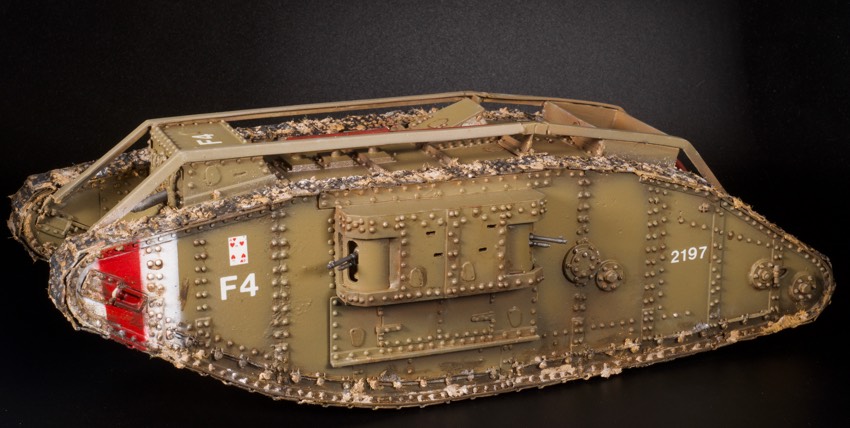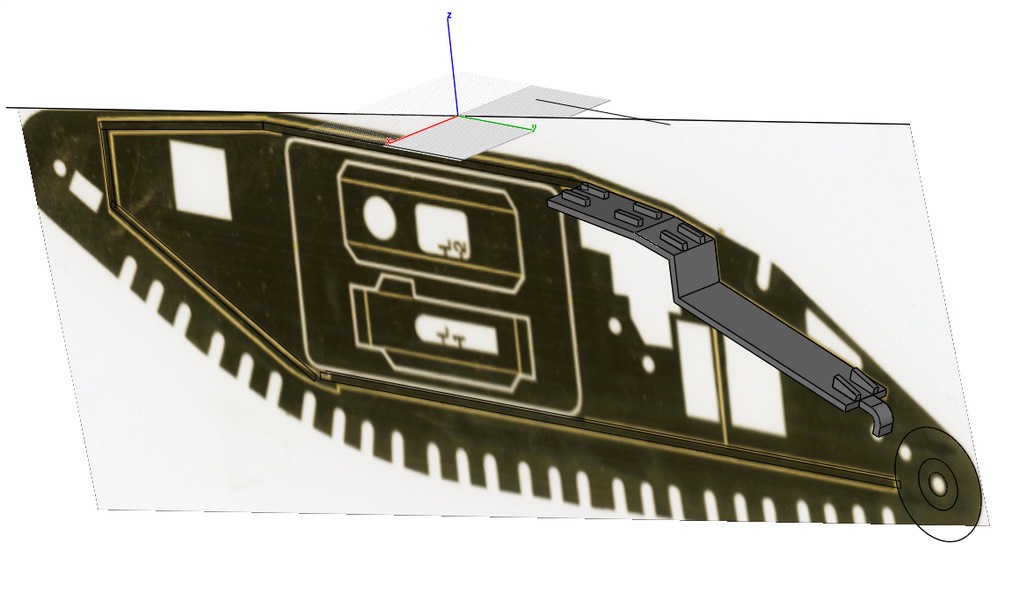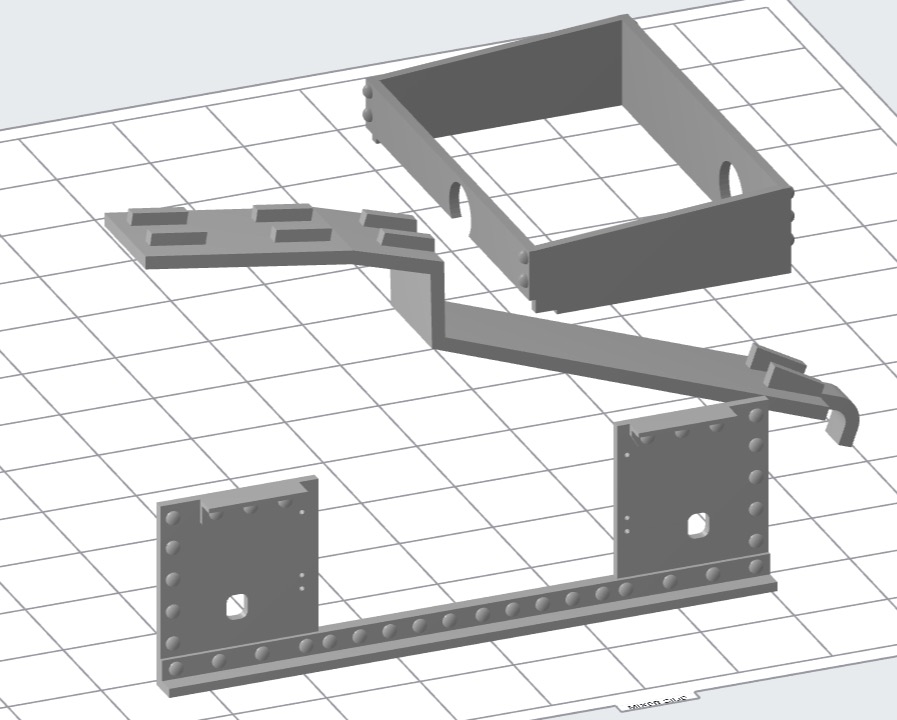- This topic has 22 replies, 9 voices, and was last updated 2 years, 1 month ago by
 Aethelflaeda was framed.
Aethelflaeda was framed.
-
AuthorPosts
-
19/07/2022 at 13:47 #175899
Deleted User
MemberWith all the 3D printed minis available thesedays and companies using 3D to design their minis more and more have anyone here ever been tempted to learn digital sculpting?
I wonder how long before traditional scultping becomes the exception.
19/07/2022 at 13:54 #175901Jim Webster
ParticipantI’ve ‘thought’ about it. But the level of proficiency I’d need, in software I haven’t got, which runs on machines somewhat better than mine, has put me off actually doing anything about it 🙂
A digital sculptor is every bit as skilled as a traditional sculptor and I haven’t the time to develop that level of skill
https://jimssfnovelsandwargamerules.wordpress.com/
19/07/2022 at 14:25 #175903 Darkest Star GamesParticipant
Darkest Star GamesParticipantI meddled with a couple of 3d sculpting programs very early on, like Silo2, and found that it was very difficult to get the detail and proportions I wanted as what looked right on the screen looked off when printed. On screen could look like good human proportions, then the print would be way spindly with a tiny head. Turns out the physical sculptors sort of got it right with the big head and hands thing…
My vehicles have always been in 3d, but with my figure sculptors now retiring I will have to give digital a go again. Should be easier now with the better programs, being able to purchase assets or premade items and having base skeletons that are motion rigged.
"I saw this in a cartoon once, but I'm pretty sure I can do it..."
19/07/2022 at 14:31 #175904 MikeKeymaster19/07/2022 at 15:03 #175907
MikeKeymaster19/07/2022 at 15:03 #175907 Darkest Star GamesParticipant
Darkest Star GamesParticipantMike, which program did you give a go? I had a bit of the same issue as most programs I use in Architecture “speak a different language” than most 3d programs. Can be hard to transition that’s for sure.
"I saw this in a cartoon once, but I'm pretty sure I can do it..."
19/07/2022 at 15:21 #175910Deleted User
MemberThe only progeam I’ve tried was Z-brush years ago and that was kind of OK. Like you all said it took a lot of realigning braincells I didn’t have to spare to get used to it so I didn’t stick with it. I have no idea how user friendly Z-brush was compared to others but it was easier to use than Blender.
@Jim Webster
I sometimes get discouraged when seeing very detailed 3d models, with rippling muscle and other little details. I think 3D sculptig might be a little easier though with the ability to undo and replicate things.@DSG
I find using images of existing miniatures to scale from very useful and helped a lot. I’ve also gotten into the habit of pritning tests with varying proportions and sizes. It didn’t help too much lookig at them side by side but comparing them to other minis helped me decide on my mini specs.19/07/2022 at 15:22 #175911 MikeKeymaster19/07/2022 at 15:27 #175912
MikeKeymaster19/07/2022 at 15:27 #175912Jim Webster
ParticipantI’ve had no training on any software and find them all counter intuitive 🙂
But as Thomaston commented, the detail people achieve does rather deter me as well. I can imagine an undo command being helpful, but I still go in awe at the level of skill
https://jimssfnovelsandwargamerules.wordpress.com/
19/07/2022 at 17:03 #175920 ian pillayParticipant
ian pillayParticipantI’ve tried blender and mesh mixer to varying results. I use solid modelling software everyday for engineering designs and I would need to put in significant effort to learn these programmes so I do most of my basic designs in the CAD software. Artillery, buildings, basic vehicles, the fancy stuff with human type autonomy I tend to find what I like on thingyverse.
Tally-Ho! Check out my blog at…..
http://steelcitywargaming.wordpress.com/21/07/2022 at 16:47 #176000 Aethelflaeda was framedParticipant
Aethelflaeda was framedParticipantI was a 3D animator for film and television a few years back. I hated the whole process of digital sculpting (a mesh is a mesh be it for a 2d output or a 3d one) and much prefer sculpting in a tactile medium like wax or clay. You lose serendipity and “overtones” with a digital tool. It’s like creating music on a synthesizer vs playing it on a physical instrument. Sizing or scaling is the only virtue of a 3d digital sculpting tool.
The only thing I might do would invest in a good 3D scanner which gives you the means to scale a physical model quickly. The mesh the scanner produces will probably still need a lot of tweaking even then.
Mick Hayman
Margate and New Orleans21/07/2022 at 17:43 #176001Robert Dunlop
ParticipantPhotogrammetry is the other way of getting physical models rendered as 3D digital objects.
Robert
21/07/2022 at 21:09 #176005 Aethelflaeda was framedParticipant
Aethelflaeda was framedParticipantThat really only works well for bas-relief. Pretty limited for curves and full 3d output. You might well spend as much time fiddling as trying to do it from scratch, but it does have its uses. I could see it for brick or stone wall textures.
We used bitmaps “decals” all the time to make a flat plane look textured for video animation. complex meshes take much longer to render so we spent a lot of time optimizing meshes, simplifying the geometry…but that doesn’t work for a 3d object.
Mick Hayman
Margate and New Orleans22/07/2022 at 06:18 #176011Robert Dunlop
ParticipantHere is a photo of Fort Sedd-el-Bahr, on Cape Helles during the Gallipoli landings. The model was scratch-built:

Here is another view of the same model:

Here is the 3D model created using photogrammetry:

And the 3D resin print:

I used the iPhone handheld to produce the 50 views needed by the software. With my ‘proper’ camera, the quality of the 3D model is even better. Plus I can easily improve the 3D model in the CAD software. It is so much easier than trying to create the model in 3D – not so much the walls but the terrain for example.
During lockdown, I was able to create 3D reproductions of 6mm WW1 figures/bases/labels for use online in Table Top Simulator using photogrammetry. The models are fully 3 dimensional, not just bas relief.
I have seen examples of actual buildings reproduced in 6mm based on 3D models created from photos taken using drones. Photogrammetry is an extraordinary technology.
Robert
22/07/2022 at 13:28 #176040 Aethelflaeda was framedParticipant
Aethelflaeda was framedParticipantThat’s pretty impressive. It’s gotten a lot better than when I last used it. 50 photos required seems to me a lot of work, i guess an hour to take them? Still, I am thinking I could model that fort in about half the time it would take for me to photo it. As for 6mm figs it might still be a useful technique as these don’t have a very high detail thresholds to cross. Since I am only concerned with masters for conventional silicon molds and not 3d printed figs for the tabletop, I think I will stick to wax or polymer clays.
Mick Hayman
Margate and New Orleans22/07/2022 at 13:37 #176042 Aethelflaeda was framedParticipant
Aethelflaeda was framedParticipantFor the terrain, I would build it using celluclay. ezpz.
Mick Hayman
Margate and New Orleans22/07/2022 at 16:55 #176043 Paint it PinkParticipant
Paint it PinkParticipantphotogrammetry
It seems, like everyone else in this thread, the temptation runs up against the wall of the amount of learning it will take.
I have sculpted stuff in the past (original BattleTech buildings, some other 15mm terrain etc), and enjoy the act of customizing miniatures, as can be seen here, old RAFM HG mecha with magnetized joints.
Still, I think I may have to find time to explore photogrammetry with appropriate software, because using cameras and taking pictures is familiar to me. We shall see. I did have a link to a bolg where a guy was running through the basics, but for the life of me I can’t find it.
Another sign of getting old.
One is good, more is better
http://panther6actual.blogspot.co.uk/
http://ashleyrpollard.blogspot.co.uk/22/07/2022 at 19:03 #176049 Autodidact-O-SaurusParticipant
Autodidact-O-SaurusParticipantI enjoy 3d modeling of ships and planes. I’ve done quite a few for simulators. Now, I’ve not work much with organic shapes and I’m not sure I’d enjoy that. I recently have been thinking about seeing what it would take to 3d print some of my models and if it’s relatively pain free….
The key is finding a modeling program that clicks with your way of thinking about shapes. I find that most modeling programs are far too complicated for the part-time user. Sure, if you’re working with the program 8 hours a day, 5 days a week, you will eventually become proficient. But who has that amount of time to beat your head against the wall for your hobby?
–jeff

Self taught, persistently behind the times, never up to date. AKA ~ jeff
More verbosity: http://petiteguerre.blogspot.com/22/07/2022 at 19:39 #176051Deleted User
Member@Rober Dunlop
Could be just me be I think the scratch-built fort looks better.@Autodidacto-O-Saurus
Nice ships, where do you get references for them? Finding good references had been my biggest problem.23/07/2022 at 08:36 #176063Robert Dunlop
ParticipantThe scratch-built fort looks better because it is painted. This really helps the details on what was otherwise an ‘ordinary’ looking effort on my part. The advantage of the 3D version is that friends don’t have to go through the same scratch-build process to get the same model. It is the general principle that I was trying to illustrate.
50 photos took me about 5 minutes. The model gets placed on a tripod with a circular disc that has segments marked out, with each segment associated with a specific set of coloured dots. This provides the background for the photogrammetry software to understand the direction and distance of each camera location. The disc allows me to walk around the tripod taking a photo at ‘ground’ level and a photo angled at around 45 degrees up from the horizontal plane opposite each segment on the disc.
Robert
23/07/2022 at 13:42 #176073 Aethelflaeda was framedParticipant
Aethelflaeda was framedParticipantIt’s not like that model’s exact identical reproduction is all that necessary at that scale. It might even be a flaw if you want to use two of the same model on the table.
It really just comes down to time and cost, an pleasure in the process. A second or third scratch built will still take less time if you include session setup, photos, software fiddling, and printing time and probably cost less, at least for me. Celluclay and card stock are cheap compared to printable resin. And like painting, making the physical model is 90% of the fun. Making digital models in software is not fun for me.
If you really are concerned about exactitude in reproduction, polymer clay press molds will handle that particular model very easily. I am not convinced I would get any advantage out of this method for the models I want to produce. While it is a nice tool for something, I expect I would not be one to use it often, for the same reasons I don’t like 3d modeling software with meshes. Serendipity and artistry are easily lost and literalism and sameness can be flaws. In the hands of a good artist it might still be a useful tool but in the hands of a non-artist the work could be too easily devoid of character and texture and sterile.
Mick Hayman
Margate and New Orleans23/07/2022 at 13:52 #176074 Autodidact-O-SaurusParticipant
Autodidact-O-SaurusParticipantwhere do you get references for them?
I generally find 3-views on-line. Pinterest has a ton of material. Modeling websites and forums are also great resources. Once I find the drawings I import the views into the modeling application and use them as guides to model the vessel. I’m not too concerned about the actual dimensions at that point but I do want accurate relational proportions. I can always resize the digital model depending on what the end goal is.
I have a lot of early aviation reference books with 3-views at home but ships tend to be more obscure.
–jeff
Self taught, persistently behind the times, never up to date. AKA ~ jeff
More verbosity: http://petiteguerre.blogspot.com/23/07/2022 at 15:57 #176077Robert Dunlop
ParticipantWhile it is a nice tool for something, I expect I would not be one to use it often, for the same reasons I don’t like 3d modeling software with meshes.
3D digital modelling is not everyone’s cup of tea, for sure. As an aside, the other thing that is helpful with 3D modelling is the ability to create and print components for a scratch-build. Another example was a 1/35 scale model of a British Mk IV tank that was missing multiple metal-cast elements. The manufacturer never replied to my request for replacements. Here is the end result, despite the problems:

Here is an example of a part that was missing, being drafted in the 3D CAD software. I scanned in the photo-etched side of the tank and adjusted the scan to true scale:

And here are the three parts ready to print:

Robert
23/07/2022 at 17:53 #176081 Aethelflaeda was framedParticipant
Aethelflaeda was framedParticipantThat would very useful. I have a 1/48 scale F105 WW I made for my father (one for which I sculpted custom rocket pods since it didn’t have them as part of the kit) which has also lost its windscreen from a dusting accident. All my attempts to replace the windscreen with transparent thermo plastics have failed miserably. the kit might be OOP but as expensive as it was twenty years ago, i wouldn’t want to buy it just for a single replacement bit.
Mick Hayman
Margate and New Orleans -
AuthorPosts
- You must be logged in to reply to this topic.



